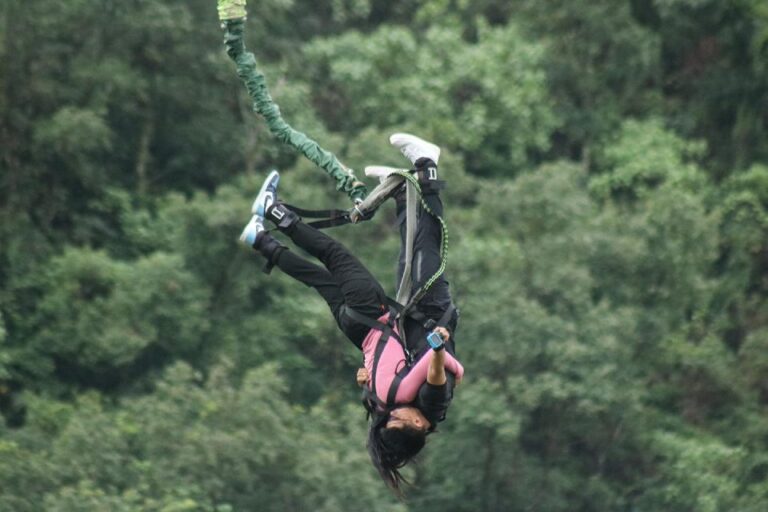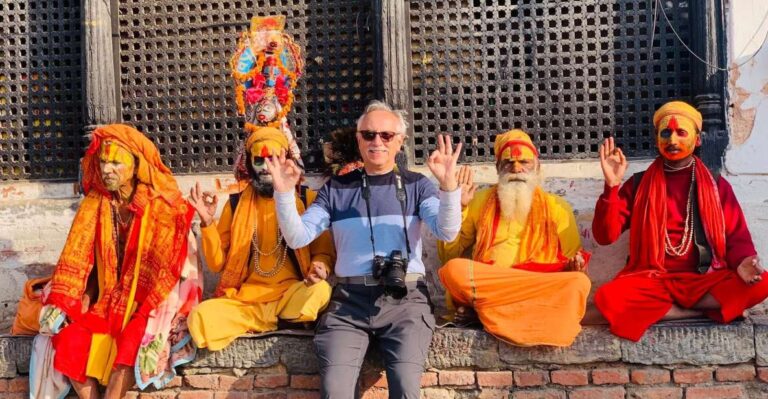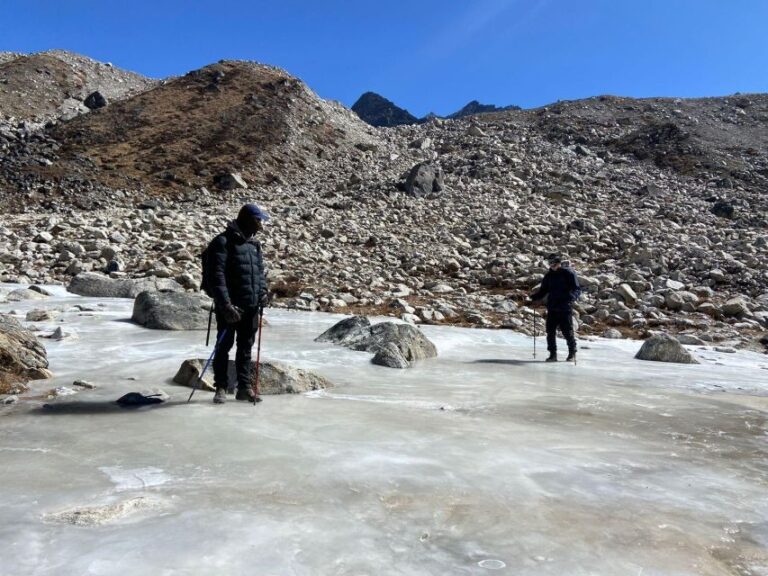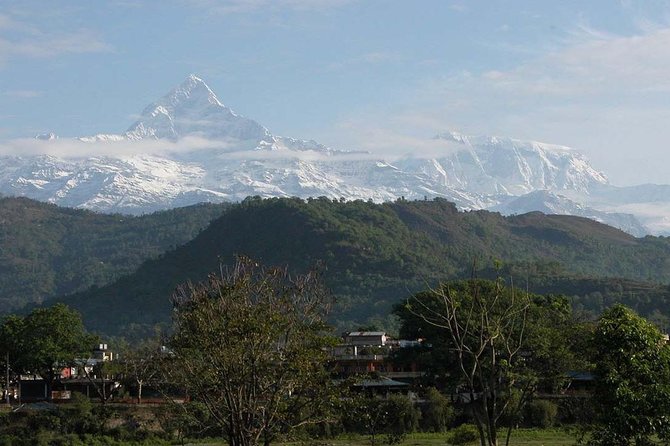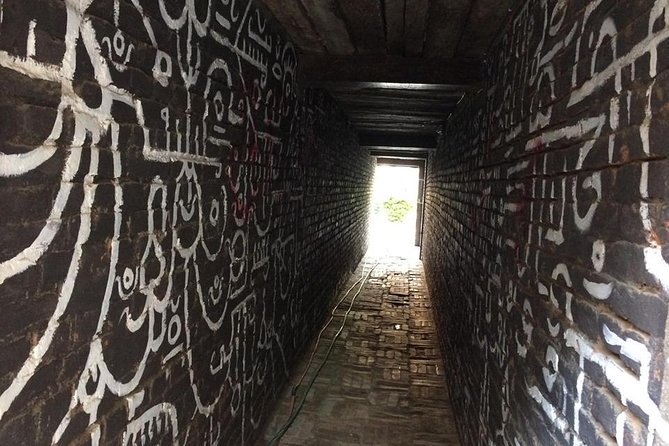Everest Panaroma Trek 8 Days
As the sun gently kisses the snow-capped peaks of the Himalayas, trekkers on the Everest Panorama Trek 8 Days are reminded of life’s fleeting beauty. The trail weaves through valleys adorned with prayer flags fluttering in the mountain breeze and offers a glimpse of the Sherpa way of life.
But what lies beyond the next bend? A world of majestic vistas and cultural wonders awaits those who dare to tread this path. Join this journey of discovery and find yourself immersed in the allure of the Everest region, where nature’s grandeur meets human resilience.
Just The Basics
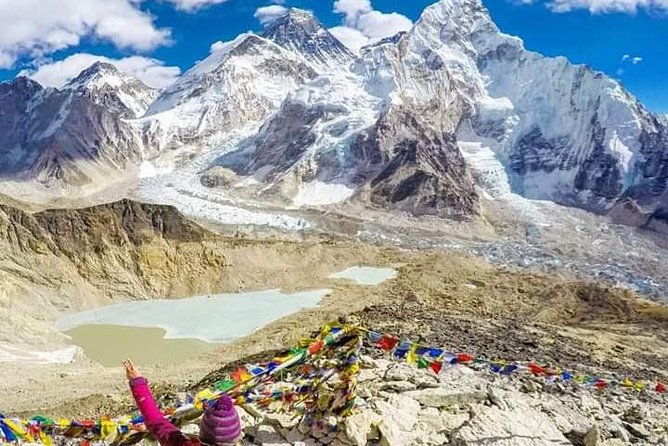
- Enjoy panoramic views of Everest and other stunning peaks.
- Prepare for varying weather conditions with proper gear.
- Stay in diverse accommodations along the trek.
- Focus on acclimatization, fitness, and health for a successful adventure.
It's also worth checking out some other tours and experiences nearby.
Trek Itinerary Overview
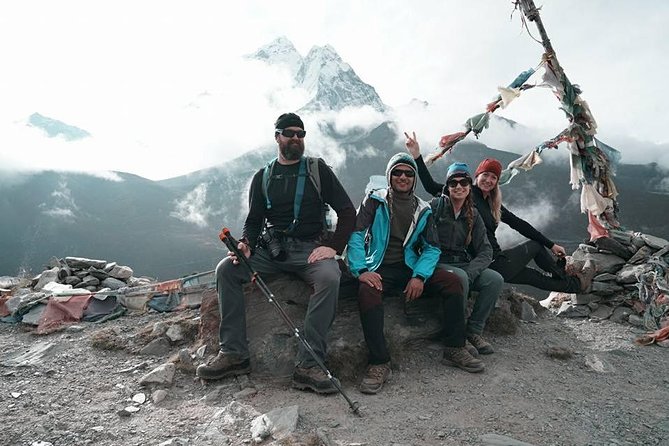
Embark on an exhilarating journey through the majestic Everest region with the 8-day Everest Panorama Trek, designed to immerse trekkers in the breathtaking beauty of the Himalayas.
Trek highlights include panoramic views of Everest, Ama Dablam, Lhotse, and Thamserku, allowing trekkers to witness some of the world’s highest peaks up close. The trek also encompasses cultural experiences in Sherpa villages like Namche Bazaar and Tengboche Monastery, providing insight into the local way of life.
Weather conditions can vary greatly during the trek, with temperatures ranging from mild to freezing, and trekkers should be prepared for sudden changes. Proper layering and gear are essential to combat the cold, ensuring a comfortable and enjoyable trekking experience.
Essential Packing List
For a successful and comfortable Everest Panorama Trek, packing the right essentials is key to ensuring a safe and enjoyable journey through the Himalayas. Here are some packing tips and equipment recommendations to help you prepare for this adventure:
| Clothing | Footwear | Accessories |
|---|---|---|
| Moisture-wicking base layers | Sturdy hiking boots | Sunglasses with UV protection |
| Insulating layers (fleece, down jacket) | Camp shoes/sandals | Sunscreen and lip balm |
| Waterproof jacket and pants | Woolen socks | Trekking poles |
| Quick-dry hiking pants | Gaiters (for snow) | Headlamp with extra batteries |
| Gloves and warm hat | Water bottle and water purification tablets |
Make sure to pack according to the season and expected weather conditions to stay comfortable throughout the trek.
Accommodation Details
When embarking on the Everest Panorama Trek, travelers can expect a range of accommodation options catering to different preferences and budgets along the trekking routes. Along the journey, trekkers will find:
- Tea Houses: Basic lodges offering simple rooms with shared facilities, providing a budget-friendly and authentic experience.
- Guesthouses: More comfortable than tea houses, often with private rooms and attached bathrooms, ideal for those seeking a bit more comfort.
- Luxury Lodges: Upscale accommodations with modern amenities like hot showers, WiFi, and cozy lounges, perfect for those looking to unwind in style after a day of trekking.
These accommodation facilities are strategically located along the trekking routes, ensuring trekkers have convenient places to rest and rejuvenate during their Everest Panorama Trek adventure.
Food and Dining Options
Travelers on the Everest Panorama Trek will discover a diverse array of food and dining options available along the trekking routes to cater to various tastes and dietary preferences. Local cuisine plays a significant role in the dining experience, allowing trekkers to savor authentic dishes like momos (dumplings), thukpa (noodle soup), and dal bhat (rice and lentils).
While enjoying these local delicacies, hikers with dietary restrictions can also find suitable options. Many teahouses and lodges offer vegetarian, vegan, and gluten-free meals upon request. It’s essential for trekkers to communicate their dietary needs in advance to ensure a comfortable and satisfying dining experience throughout the Everest Panorama Trek.
Altitude and Acclimatization
Amidst the diverse array of food and dining options available along the Everest Panorama Trek, understanding altitude and acclimatization becomes paramount for trekkers venturing into higher elevations. Altitude sickness can affect anyone regardless of fitness level, making it crucial to recognize the symptoms and take necessary precautions.
Proper acclimatization techniques can significantly reduce the risk of altitude-related illnesses, ensuring a safer and more enjoyable trekking experience. Here are three key points to consider:
- Stay hydrated by drinking plenty of water throughout the day.
- Ascend gradually to allow your body time to adjust to the altitude.
- Pay attention to your body and communicate any symptoms of altitude sickness to your guide promptly.
Trek Difficulty and Fitness Level
For trekkers embarking on the Everest Panorama Trek, assessing the trek difficulty and matching it with their fitness level is crucial for a successful and enjoyable journey through the Himalayas. Trek preparation is key, including regular cardio and strength training to build endurance and muscle strength.
It’s also advisable to start a few months before the trek to gradually increase fitness levels. Fitness tips for this trek include focusing on cardiovascular exercises like hiking, running, or cycling to improve stamina. Plus, incorporating strength training for leg muscles will help tackle the challenging terrain.
Ensuring proper hydration, nutrition, and sufficient rest are also vital components of preparing for the Everest Panorama Trek to make the experience both safe and rewarding.
Cultural Insights and Highlights
As trekkers conquer the physical challenges of the Everest Panorama Trek, they’re rewarded with rich cultural insights and highlights that showcase the heritage and traditions of the Himalayan region.
-
Exploration: Trekking through the picturesque villages allows visitors to enjoy the daily lives of the local Sherpa community.
-
Local Customs: Observing traditional ceremonies and rituals provides a deep understanding of the spiritual beliefs that shape the region’s culture.
-
Cultural Exchanges: Interacting with the friendly locals offers a unique opportunity to exchange knowledge and gain a new perspective on life in the mountains.
Safety Tips and Emergency Procedures
During the Everest Panorama Trek, ensuring your safety is paramount, and being well-prepared for any potential emergencies is crucial for a successful and enjoyable journey. Safety precautions such as acclimatizing properly, staying hydrated, and following the guide’s instructions are essential. In case of emergencies, knowing the emergency response procedures like contacting local authorities or using emergency communication devices is vital. Here is a handy table summarizing some key safety tips and emergency procedures:
| Safety Tips | Emergency Response |
|---|---|
| Acclimatize properly | Contact local authorities |
| Stay hydrated | Use emergency communication devices |
| Follow guide’s instructions | Know evacuation routes |
| Carry essential medications | Signal for help |
| Check weather forecasts | Stay calm and assess situation |
Here's a few more nearby tours and experiences we think you'll like.
Frequently Asked Questions
How Far in Advance Should I Book the Everest Panorama Trek 8 Days Tour to Secure My Spot?
To secure a spot on the tour, it’s advisable to book well in advance. The booking deadline varies; check with the tour provider. Travel insurance is recommended. Consider weather conditions for packing.
Are There Any Age Restrictions or Limitations for Participating in the Everest Panorama Trek?
Age restrictions and trekking limitations vary depending on the tour provider and the specific trek. It’s crucial to check with the tour operator for any age requirements or physical restrictions before booking your trek.
Can I Bring My Own Trekking Gear, or Is It Provided as Part of the Tour Package?
Yes, participants can bring their own trekking gear for added comfort and familiarity. However, if preferred, the tour package includes essential trekking gear to ensure convenience and readiness for the Everest Panorama Trek 8 days.
Is There Any Wi-Fi or Cell Phone Signal Available Along the Trekking Route?
Yes, there is limited Wi-Fi availability and cell phone signal strength along the trekking route. While some areas may have intermittent connectivity, it’s advisable to not rely solely on these for communication during the trekking adventure.
Are There Any Opportunities for Cultural Interactions or Experiences With Local Communities During the Trek?
Local customs and traditional dances offer enriching cultural interactions with the local communities during the trek. Travelers can enjoy authentic experiences, learning about traditions and connecting with the rich heritage of the region.
Not for you? Here's more of our most recent tour reviews happening neaby
- Upper Mustang Trekking – 15 Days
- Everest Helicopter Tour: Experience the Ultimate Aerial Adventure of a Lifetime
- 12 Days Annapurna Circuit Trek
- Private Half-Day Off-Road Safari in Shivapuri-Nagarjun Park – Kathmandu
- Nepal Multisport Adventure Tour
- 7 Days Honeymoon Tour in Nepal
- Nepal Cultural & Adventure
- Bandipur Homestay Tour
- Tibet Tour With Everest Base Camp – FLY IN DRIVE OUT- 8 DAYS
- Day Hiking Near Kathmandu Valley.
- 4 Days Langtang Valley Short Trek
- 12 Days Everest Base Camp Trek in Nepal
- Lobuche East Peak Climb With Everest Base Camp Trek
- 4-Day Kathmandu Valley UNESCO World Heritage Sites Tour
- UNESCO World Heritage Site Tour in Kathmandu
Final Words
Embark on the Everest Panorama Trek 8 Days for an unforgettable adventure in the Himalayas. From the stunning landscapes to the vibrant Sherpa culture, every moment of this journey is filled with awe-inspiring beauty and rich experiences.
With proper preparation and a sense of adventure, trekkers can conquer the challenge of this trek and create lasting memories in the shadow of Mount Everest. Don’t miss out on this incredible opportunity to explore one of the world’s most iconic destinations.
